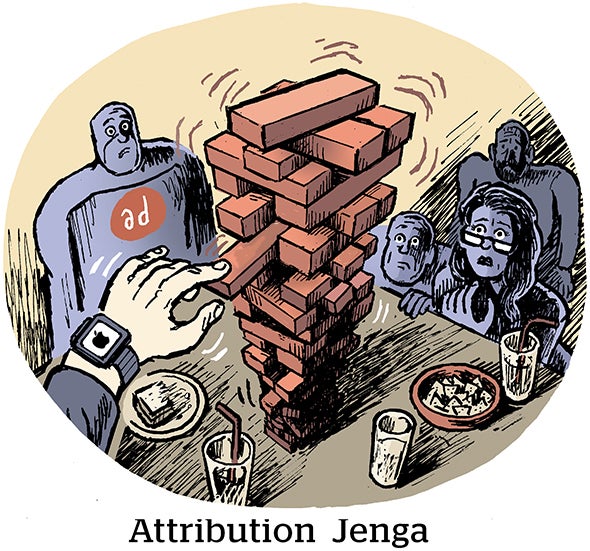In the same way hope is not a strategy, customer experience design is not an accident.
Unfortunately, many companies fail to deliver on customers’ tacit demands—their essential needs, which involve how the experience of purchase or adoption or use is experienced.
With a few obvious exceptions, such as dealing with Apple, I’m shocked and amazed when my (admittedly low) expectations are exceeded by a customer experience I would characterize as truly delightful. And I’m not unusual. Most consumers will be delighted if a company even comes close to delivering on a customer experience, not just a product.
At the heart of the perception of customer satisfaction is this question: How do companies define what a customer expectation actually is? A useful answer to this question is that an expectation is the sum of the demands or needs plus the desires or wants in a given context or situation.
Expectations can be negative or positive. But we’re focusing on the ones that are positive, where the expectation is to have, at a minimum, a satisfactory experience. Furthermore, expectations fall along a colorful spectrum from “just barely acceptable” on one side of the equation to “mind bogglingly ecstatic” on the other.
So, how is this possible? The answer is surprisingly straightforward. Fundamentally, customer experience design is an intentional process that companies can take to the bank—that is, once they’ve gone beyond paying lip service to it and made it a strategic imperative.
Customer experience design involves a deep empathy and an organizational willingness to anticipate the needs of and respond to the customer. Beyond that, it requires a real understanding of the nature of experiences as interactions between people and things, as well as between people and people. This involves the principles of design.
Looking at the individual elements of customer experience design strategy is the best way to establish how the sum of the parts contribute to the process.
Customer: Designing a customer experience demands a significantly higher degree of specificity than classic segmentation models or persona work provide. It requires a detailed understanding, and an empathetic — almost clairvoyant — sense of which customers through which channels and in what context will be interacting with a company’s products, services, IT systems, employees or partners.
Gaining keen insights at this level of detail requires a concrete commitment to look under the surface of the demographics, purchase behavior and personas. It requires digging into, analyzing and carefully mapping out the characteristics and attributes of the wants and needs of target customers who represent each micro-segment.
In the absence of this level of detail, your guess is as good as mine when it comes to inferring what demands and desires each segment is likely to have in a given circumstance.
Developing an actionable understanding at this depth requires a company to look at customers as human beings, not market segments (or, as the chairman of a well-known Silicon Valley financial company once said to me, rats). It pays off. Just ask Apple.
Experience: It may be a misnomer to talk about designing customer experiences because, technically speaking, an experience is something that somebody has, not something that somebody designs. And while it may be more appropriate to talk about customer expectation design, somehow something gets lost in translation.
For this context, I’m talking about crafting the conditions to support the logical unfolding of a set of related steps that a customer will engage in as they begin to, and continue to, interact with our products, services, IT systems, employees, channel distribution and delivery partners.
To the extent that a company is able to design these experiences intentionally, and for a specific type of user, we can take into consideration the “criteria for sufficiency” and the “criteria for success.” Accompanying these criteria are the boundary conditions for acceptable experience and the threshold for the conditions that create delight.
When companies take the time to understand — from the customer’s point of view — the basic demands that must be met in order to achieve satisfaction, and they expend the effort to get inside the customer’s head to explore desired outcomes, the money will follow.
Design: This is one of the most misunderstood words in the corporate lexicon, because design means many things to many people. From marketing communication professionals to software architects to industrial designers, ultimately design boils down to the intentional relationship between utility value, emotional impact and aesthetics.
Things can be designed. These are often products. Processes can be designed. These may be services. Interactions can be designed. These may turn out to be experiences.
What we’re talking about is identifying the kinds of specific people who want to purchase products or services being engaged in a logically related set of interactions that a company has intentionally created to achieve mutually beneficial outcomes. And, we’re not limiting these interactions to discrete moments in the customer’s experience. A more profitable way to look at customer experience design is to step back and look through the customer’s eyes at the processes from beginning to end.
Strategy: Design is the next forefront of innovation. Taking a broad design view requires that a company place customer experience design strategy in the foreground of their over-arching business goals. It’s not just about writing code to build products, but about understanding t how and why consumers will utilize such products.
A truly viable business strategy is that one that encompasses what we deliver as a company. And that’s about design in the biggest way possible. To do it right, we have to address who are we, what are we trying to accomplish, how will we go about achieving it and what do we need to design to fulfill the value proposition our customers seek.
Harry Max is a principal of Rubicon Consulting. He can be reached at harry@rubiconconsulting.com.
Related Articles:
Don’t Boil the Ocean: Focus on Important Customer Experiences
Five Costly Customer Satisfaction Myths and Misunderstandings
Loyalty Library: The Seven Key Elements of Best Customer Management, Part One



